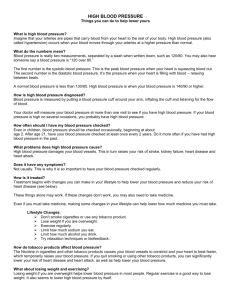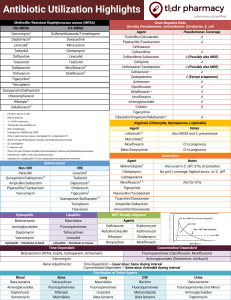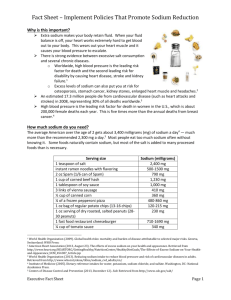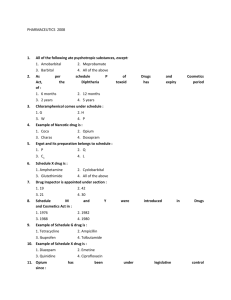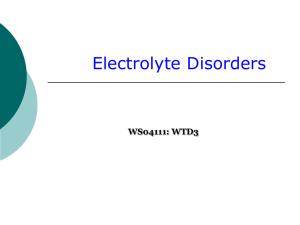Questions to ask when choosing antibiotics?
advertisement
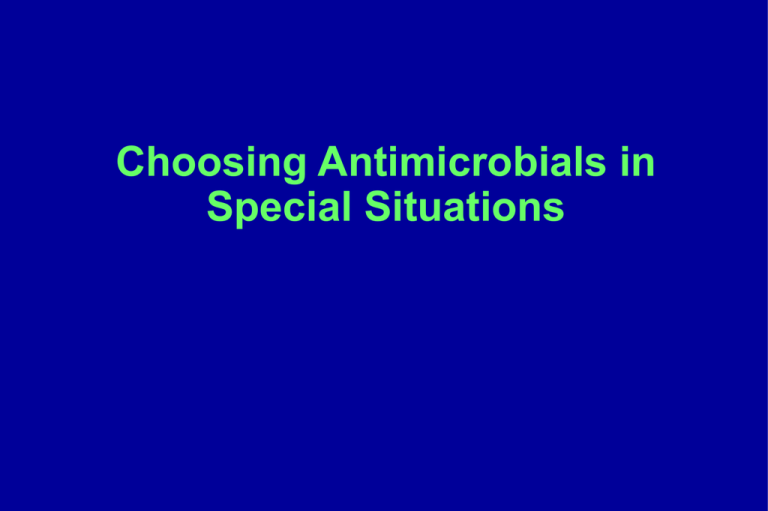
Choosing Antimicrobials in Special Situations Additional considerations in making a final antibiotic selection • Site of action – (Will the antibiotic penetrate into the site of infection and be active there?) • Cidal vs. Static activity – (When is a cidal antimicrobial required?) • Sodium load – (Will the sodium content of the antibiotic contribute to fluid overload and circulatory impairment?) • Ease of administration – (Can the number of IVs be minimized for home therapy? Or can oral drugs be substituted?) • Microbial ecology of the institution and the community – (Will the use of certain agents contribute to resistance in the larger community?) Other important considerations (not discussed in this presentation) • Covering the spectrum with the minimal number of drugs” – See “Principles of Antimicrobial Therapy • Allergies – See “Antibiotic Allergies & Adverse Effects” • Renal dysfunction – See “Adjustments for Renal & Hepatic Failure” • Hepatic dysfunction – See “Adjustments for Renal & Hepatic Failure” Site of Action: CNS penetration • Reliable – high-dose 3rd generation cephalosporins – high-dose penicillins – trimethoprim-sulfa – metronidazole – chloramphenicol – quinolones • Variable: vancomycin, (linezolid) • Poor – aminoglycosides – macrolides and clindamycin – tetracyclines – early generation cephalosporins – daptomycin Other site-of-action issues • Abscesses – Aminoglycosides are inactive at the low pH found in abscesses • Lungs – Daptomycin is ineffective in pneumonia because the drug partitions in the surfactant layer instead of the bacterial membrane • Prostate – Beta-lactams penetrate poorly. Fluoroquinolones penetrate reasonably well. • Urine – Drugs excreted primarily by the liver do not achieve high concentrations in high (e.g., ceftriaxone, nafcillin, clindamycin) Generalities about microbial killing • Usually cidal drugs – beta-lactams (except enterococci) – vancomycin (except enterococci) – quinolones – aminoglycosides – daptomycin – amphotericin B • Usually static drugs – tetracyclines (e.g., doxy) – macrolides and clindamycin (for many) – chloramphenicol (except for meningococci – imidazoles and triazoles – linezolid and pneumococci When are cidal drugs essential? • Meningitis* • Endocarditis* • Neutropenic fever* • (Whenever possible in a serious infection) *conditions in which the host is unable to clear the pathogen even if it is inhibited from growing Sodium content of commonly used antimicrobials (from the Cleveland Clinic web site) Drug Name and Dosage Unit Acyclovir, 1g Amikacin sulfate, 1g Aminosalicylate sodium, 1g Ampicillin, 1g Cefazolin sodium, 1g Ceftazidime, 1g Ceftizoxime sodium, 1g Ceftriaxone sodium, 1g Cefuroxime, 1g Chloramphenicol, 1g Colistimethate sodium, 150 mg Dicloxacillin, 250 mg (capsule) Dicloxacillin, suspension 65mg/5mL Didanosine, buffered tablets Erythromycin ethylsuccinate, susp. 200 mg/5mL Ganciclovir, 500 mg vial Imipenem/cilastatin, injection 1 g IV Imipenem/cilastatin, injection 1 g IM Metronidazole, 500 mg IV Oxacillin sodium, 1 g Penicillin G potassium, 1 million units parenteral Penicillin G sodium, 1 million units parenteral Piperacillin/tazobactam, 1 g Sodium (mg) 96.6 29.9 108.9 66.7 47 54 59.8 59.8 55.2 51.8 22.9 13 27 264.5 29 46 73.6 84.4 322 64.4-71.3 7 46 54 Sodium (mEq) 4.2 1.3 4.7 3 2 2.3 2.6 2.6 2.4 2.25 1 0.6 1.2 11.5 1.3 2 3.2 2.8 14 2.8-3.1 0.3 2 2.35 Ease of Administration • Once Daily IV Dosing – Ceftriaxone – Ertapenem – Aminoglycosides – Daptomycin – Vancomycin (with mild renal impairment) • Twice Daily IV Dosing – Vancomycin (with normal renal function) – Cefotetan Antibiotics with excellent oral bioavailability (may be substituted for IV equivalents) • Linezolid • Metronidazole • Fluconazole • Fluoroquinolones • Trimethoprim-sulfamethoxasole



